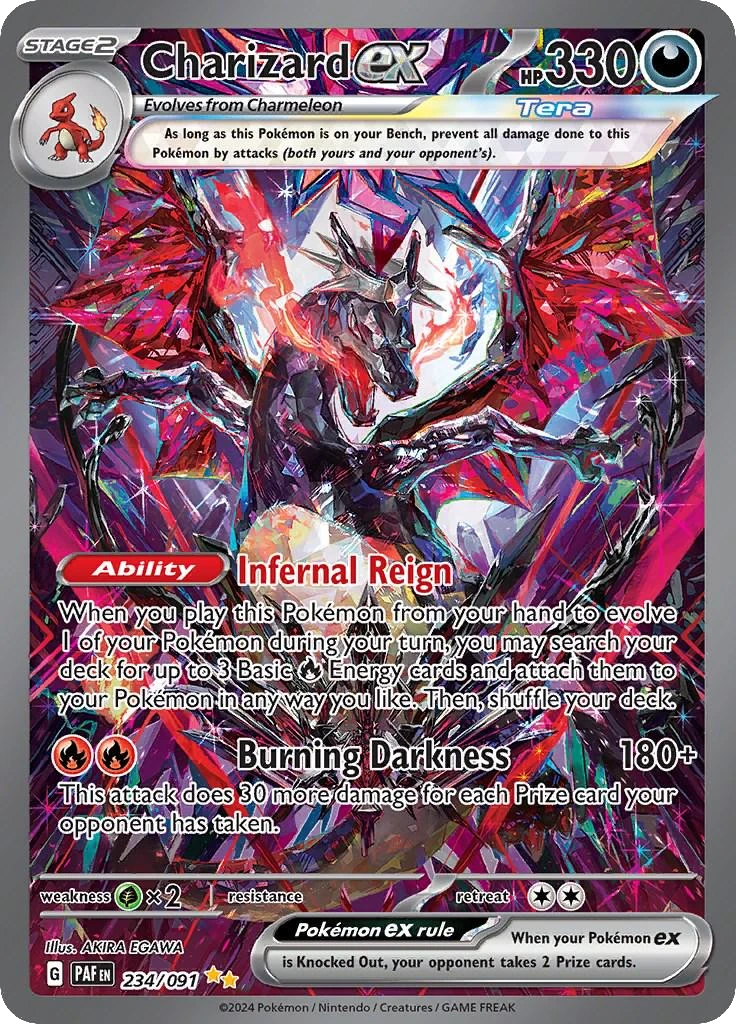NOTE: This article is generated by AI - It was genereated as filler and for me to practise styling the blog for it’s release.
Why This Card Reigns Supreme #
Ask any Pokémon fan, casual or hardcore collector, to name the most iconic Pokémon card, and chances are you’ll hear one name echo back: Charizard. From the schoolyards of the late 90s to the high-stakes auction houses of today, this fiery lizard has captivated hearts and wallets like no other. But what makes the Base Set Charizard, and its many successors, so special? Let’s dive into the history and cultural impact of the card that arguably defines Pokémon TCG collecting.

The Spark: Base Set Origins (1999) #
When the Pokémon Trading Card Game launched internationally in 1999, based on the already wildly popular video games, kids were instantly hooked. Among the 102 cards in the Base Set, one stood out. Illustrated by the legendary Mitsuhiro Arita, the holographic Charizard card (#4/102) wasn’t just powerful in playground battles (though its 120 HP and Fire Spin attack felt immense); it was visually stunning. The holo pattern, the imposing dragon-like pose, and the sheer cool factor made it the card everyone wanted to pull from a booster pack. Its relative rarity compared to other holos cemented its status as the ultimate prize.
More Than Just Cardboard: Cultural Significance #
The Base Set Charizard quickly transcended the game itself. It became a status symbol on the playground, a mythical treasure whispered about in hushed tones. Finding one felt like striking gold. This initial hype created a ripple effect that continues today. News stories about high-value Charizard sales, celebrity collectors showcasing their graded copies (looking at you, Logan Paul!), and the sheer nostalgia associated with it have kept Charizard in the cultural zeitgeist. It represents the peak of the initial Pokémon craze for many and serves as a tangible link to childhood memories.
Still Burning Bright: Modern Charizard Chase Cards #
Wizards of the Coast, and later The Pokémon Company International, understood Charizard’s appeal. Throughout the TCG’s history, new Charizard cards have consistently been featured as powerful, rare, and highly desirable ‘chase’ cards in new sets. From the early Neo Destiny’s Shining Charizard to modern behemoths like the Charizard VMAX from Champion’s Path, the Rainbow Rare Charizard VSTAR from Brilliant Stars, or the Special Illustration Rare Charizard ex from Obsidian Flames, pulling a top-tier Charizard remains a set-defining moment for collectors.

These modern iterations often feature stunning alternate artwork, intricate textures, and competitive viability, ensuring that Charizard isn’t just a relic of the past but an ongoing force in the collecting world. The constant reinvention keeps the flame alive for both nostalgic collectors and new fans entering the hobby.
The Undisputed King #
Charizard’s reign is a unique blend of factors: nostalgic power from its Base Set debut, striking artwork, perceived TCG strength (especially early on), consistent high-rarity reprints, and significant cultural entrenchment. It’s the card that introduced many to the concept of “chase cards” and remains the benchmark against which other popular Pokémon cards are often measured. Whether you’re hunting for the original grail or chasing the latest secret rare, the Charizard phenomenon shows no signs of cooling down. It truly is the undisputed king of Pokémon cards.
